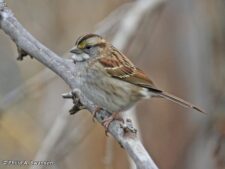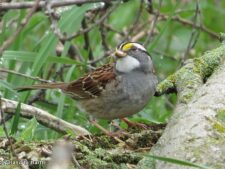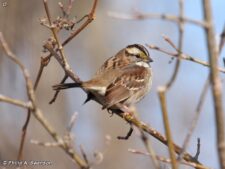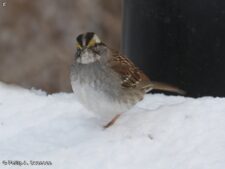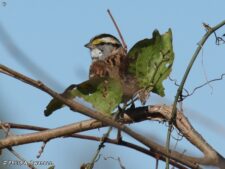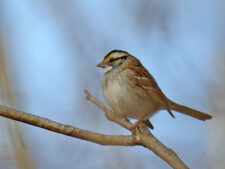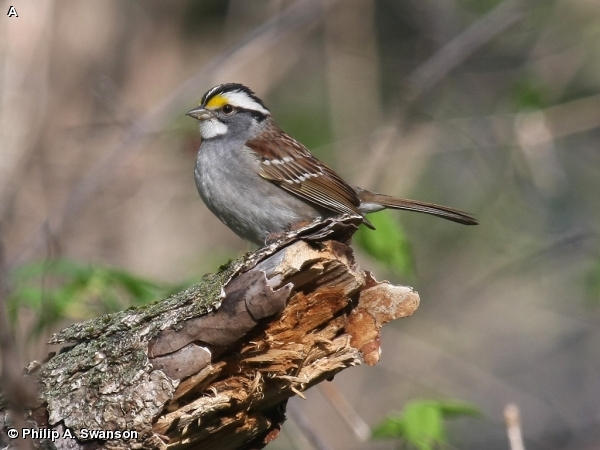
6.75 inches long. The White-throated Sparrow is a stocky sparrow with a dark conical bill and pink legs and a long slightly forked tail. The back is chestnut and streaked with black. There are two color morphs for this bird. In breeding plumage one morph has bold black and white head stripes with yellow lores and the other morph has tan and brown head stripes with yellow lores. There is a white throat that contrasts with a gray breast and cheeks. The wings are brown with two white wing bars. The belly is whitish. The non-breeding plumage is duller overall. The breast and flanks have indistinct streaks. The head stripes become more brown and tan rather than black and white and the yellow lores become indistinct.
The White-throated Sparrow is a common migrant through the area. It may be seen from early April through late May and again in September and October. It may overwinter in small numbers.
The White-throated Sparrow occurs throughout much of eastern North America at some season. It winters in mixed flocks in hedgerows, brush, and thickets. During migration and throughout winter, this species regularly visits feeding stations. It hops on the ground as it forages for seeds sometimes scratching the ground to uncover food. White-striped males are more aggressive and territorial than their tan-striped counterparts. Also white striped birds tend to mate with tan striped birds. Its distinctive whistled song is “O Sweet, Canada, Canada, Canada”.
Disclaimer: The content of NatureSearch is provided by dedicated volunteer Naturalists of Fontenelle Forest who strive to provide the most accurate information available. Contributors of the images retain their copyrights. The point of contact for this page is: Phil Swanson.

